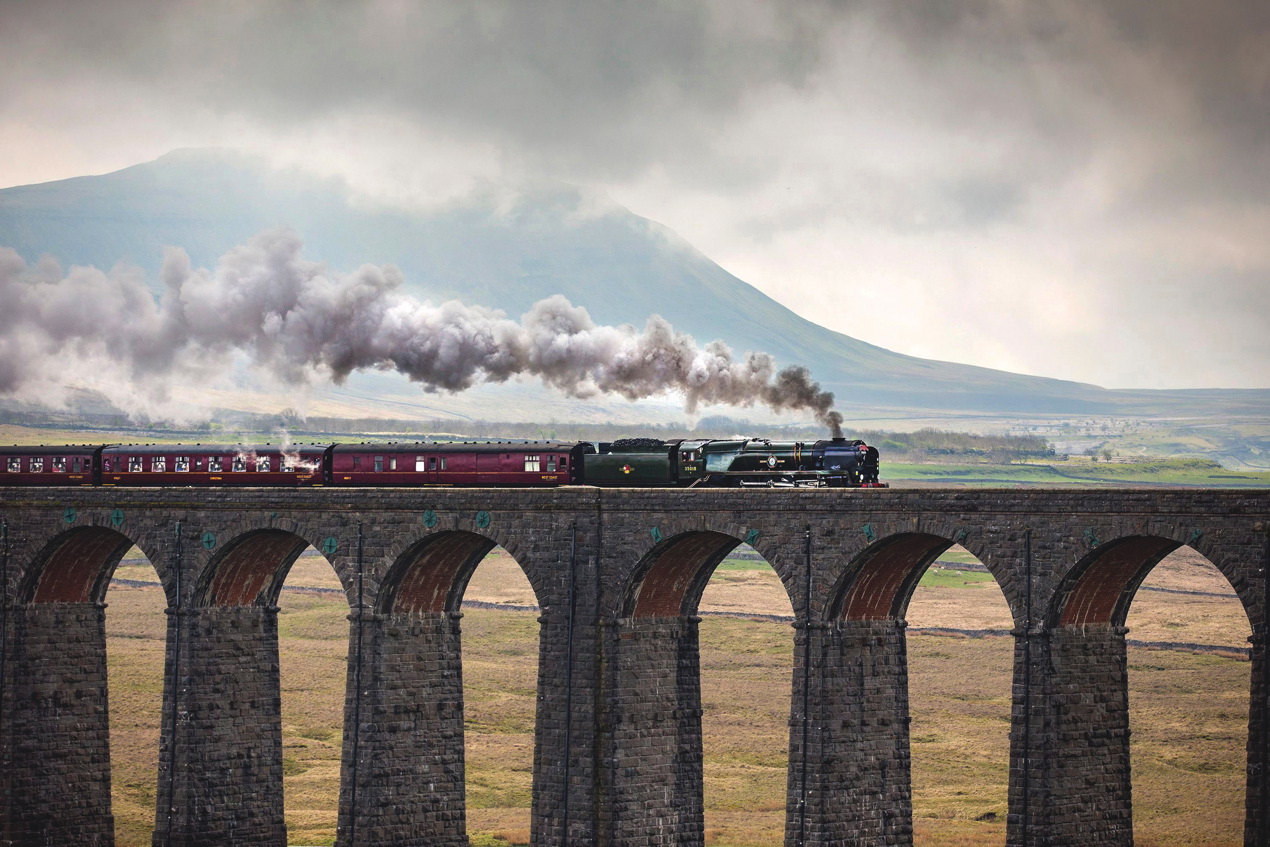Steam into the new decade
The author of a book detailing the fascinating history of the Settle to Carlisle railway says that after years of uncertainty, the 73-mile long line has a secure future
It is 30 years since the scenic Settle to Carlisle railway was saved from the axe. Since then, according to the author of a new book about the line, people who love it have lived in a permanent state of anxiety that there would be yet further attempts at closure.
“It’s not at risk,” Paul Salveson tells Big Issue North. “What is being debated, though, is how the line will be used. Will it continue pretty much as now, and serve the rural communities of the Yorkshire Dales while providing access for visitors, or will it be upgraded for faster long-distance trains as well?”
The 73-mile route was built by the Midland Railway during the great Victorian age of steam, crossing some of England’s wildest landscape and costing hundreds of lives during its construction. The most challenging obstacle for engineers was Yorkshire’s highest peak, Whernside, and their answer was to blast the 1-1/2-mile-long Blea Moor Tunnel through the mountain’s northern shoulder. Thirteen more tunnels would be required as well as 22 viaducts, the longest and most famous marching for a quarter of a mile across Ribblehead on 100ft-high arches.
It is now considered a national treasure, according to Salveson, although in the 1970s passenger numbers declined when the Settle-Carlisle was deliberately run down by British Rail. A massive public outcry kept the line open, but an increasing number of recent landslips and flooding incidents have required costly repairs.
In 2016 a 500,000-tonne landslip near Armathwaite in Cumbria closed the line for over a year while underpinning work costing £23 million was carried out. This year heavy rain has necessitated more closures and repairs, including a landslip at Dent Head viaduct on the Yorkshire-Cumbria border and one further north between Kirkby Stephen and Garsdale.
So could the effects of climate change eventually close the line? Salveson says the fact that so much money had been spent on repairs proved it has an official future.
“What people are really talking about is making more use of it for longer distance trains, for example ones starting in Nottingham and running all the way to Glasgow. That market isn’t well served
at the moment.”
Another proposal under discussion, he said, is for through trains from Greater Manchester and Lancashire to access the Settle-Carlisle via the Clitheroe-Hellifield line currently used for freight. Not only would this open up the Settle-Carlisle to visitors from the North West, it would create a new rail link to Manchester and towns west of the Pennines for people living in the Yorkshire Dales.
Salveson is visiting professor in transport at Huddersfield University. He pioneered Britain’s first Community Rail Partnerships, which encouraged local users, campaigners and railway staff to look after stations, publicise timetables and organise events like music trains on poorly used services. Early in his career he was a goods guard, sometimes working on Settle-Carlisle freight trains.
His book collects fascinating photographs from the line’s history and chronicles its construction by 7,000 workers. At the Ribblehead Viaduct site alone, he writes, accidents resulted in one fatality a week, while smallpox epidemics in workers’ shanty towns killed hundreds of men, women and children.
Today’s vigorous promotion of the line ensures that their deaths were not in vain. Although most people believed the Settle-Carlisle was doomed in the 1980s the line can look forward to a positive future thanks to expanding passenger numbers and freight usage, which support tourism and the rural economy. “That’s something its original promoters would have welcomed and embraced,” Salveson writes.
The Settle-Carlisle Railway by Paul Salveson is published Crowood Press (£24)

Leave a reply
Your email address will not be published.